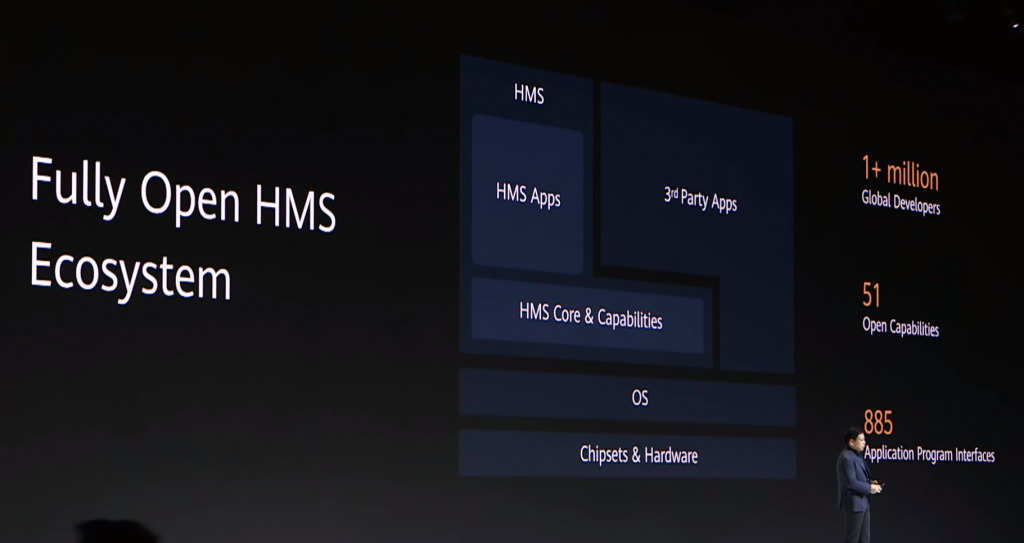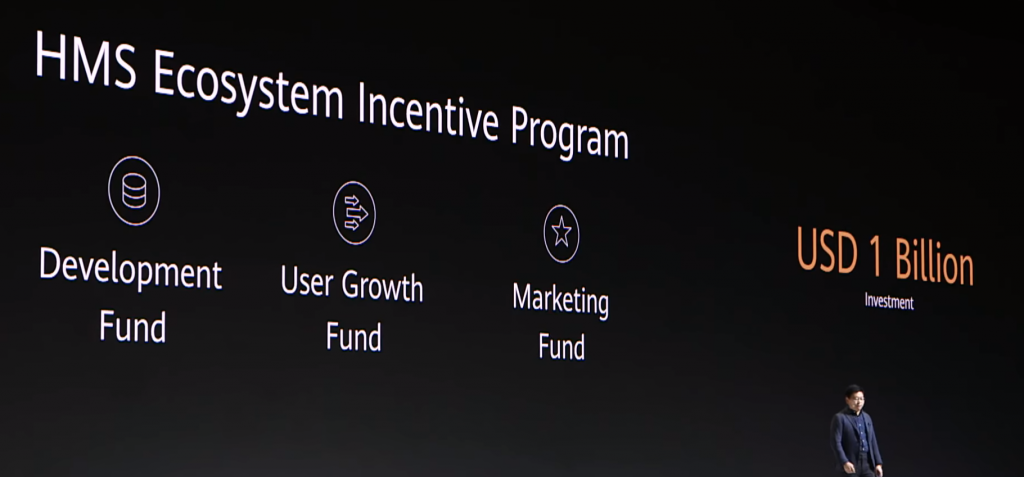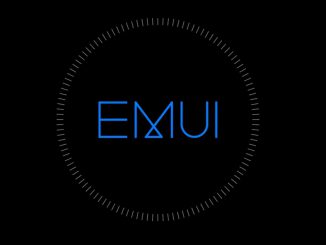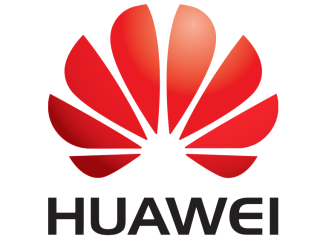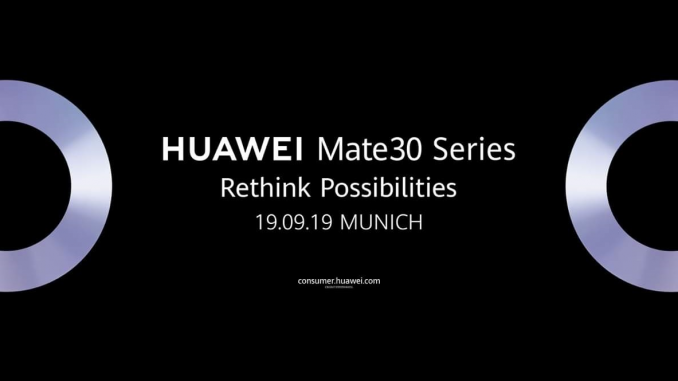
This past 19th of September, Huawei launched their new Mate 30 series in Munich, Germany, raising the bar once again for what a smartphone should be.
Artículo disponible en Español | Article disponible en Français
This past 19th of September, live from Munich, Germany, Huawei unveiled their new Mate 30 series, introducing a new camera, design and software features, pushing once again the limits of smartphones. A week earlier, the company had already unveiled, at IFA2019, various new products, such as their new mobile SoCs, the Kirin 990, coming in two variants, a 4G and a 5G one. The Chinese manufacturer also unveiled two new colours for the P30 Pro, just as last year when they introduced new variants for their P20 Pro. Finally, we also saw the presentation of their own Bluetooth chipset, the Kirin A1, found on their new Huawei Watch GT 2 and FreeBuds 3.

This year’s event seemed to be a bit different from past events, with the presentation following a similar path to the P30 series launch event yet appearing a lot more disorganized. At the same time, Richard Yu, CEO of Huawei’s Consumer Business Group, also seemed a lot more excited than usual during the presentation. While the P30 series was launched under the tagline “Rewrite the rules of photography”, Huawei has picked “Rethink possibilities” for the Mate 30 series.

The presentation opened with Richard Yu pointing out the rapid growth of the company since the beginning of the year, covering the period of January to August 2019, with 26% more smartphones shipped, 249% more PCs shipped, 256% more “smart audio” (likely FreeBuds and others) and 278% more wearables shipped, showing that, despite negative press coverage and uncertainties surrounding the trouble with the US government, this has not stopped the company from continuing its stellar rise. Mr. Yu also pointed out that, while they shipped 26% more smartphones, the revenue growth was 40%, due to more premium smartphones, such as the P30 and P30 Pro, being sold, instead of lower end devices. The section with the smallest growth was tablets, with barely over 10% more tablets shipped, which is understandable, due to smartphones having bigger displays and tablets remaining a relatively niche product. By this part of the presentation, Mr. Yu took a moment to thank the company’s partners, carriers and consumers, going as far as bowing to the audience to express his sincerity.
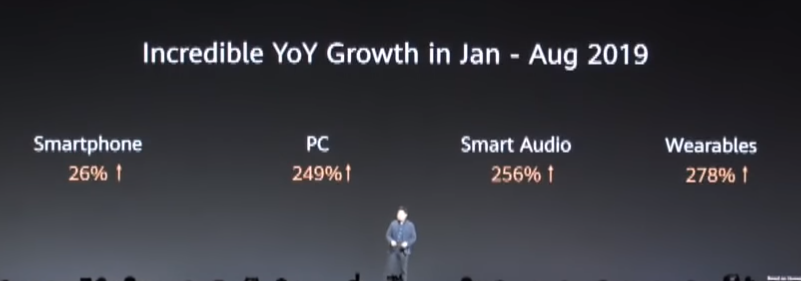
Following this bow, Mr. Yu continued explaining how the global recognition of the brand has continued to improve, with Huawei ranking 47th in Brandz, 68th in Interbrand and 12th in Brand Finance, information which was already previously available. Since launch, the company has shipped 16 million units of the Mate 20 series, and 17 million units of the P30 series. Mr. Yu also confirmed, in a short recap, that the company’s foldable smartphone, the Huawei Mate X, would start shipping next month in China. This short announcement was followed by what is likely the opening line of the Mate 30 series launch, “Push the boundary of possibility”, with Huawei introducing, once again, new technologies.
This time, the company decided to introduce a round design for the camera module, instead of the square design introduced with the Mate 20 series last year, which has now been copied by both Google on their Pixel line-up and Apple with their new iPhones. Huawei calls this new design “Exquisite Halo Ring Design”, inspired by professional cameras.
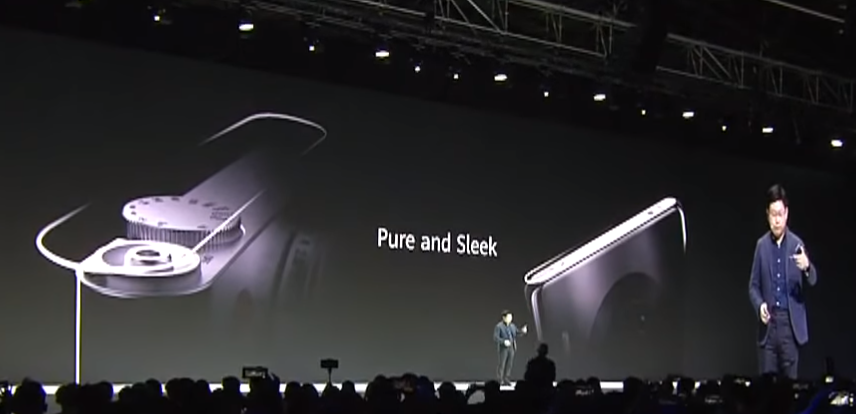
In terms of hardware, the new Mate 30 and Mate 30 Pro start at 8GB of RAM, at least for the version presented. Internal memory-wise, we find a single version at 256GB, although, once again, there will likely be other versions coming later. The devices are also available in two versions, 4G and 5G, with the 5G version using the Kirin 990 5G. This means there’s a difference in terms of performance between both variants, as the Kirin 990 5G can clock higher and is overall more power efficient.
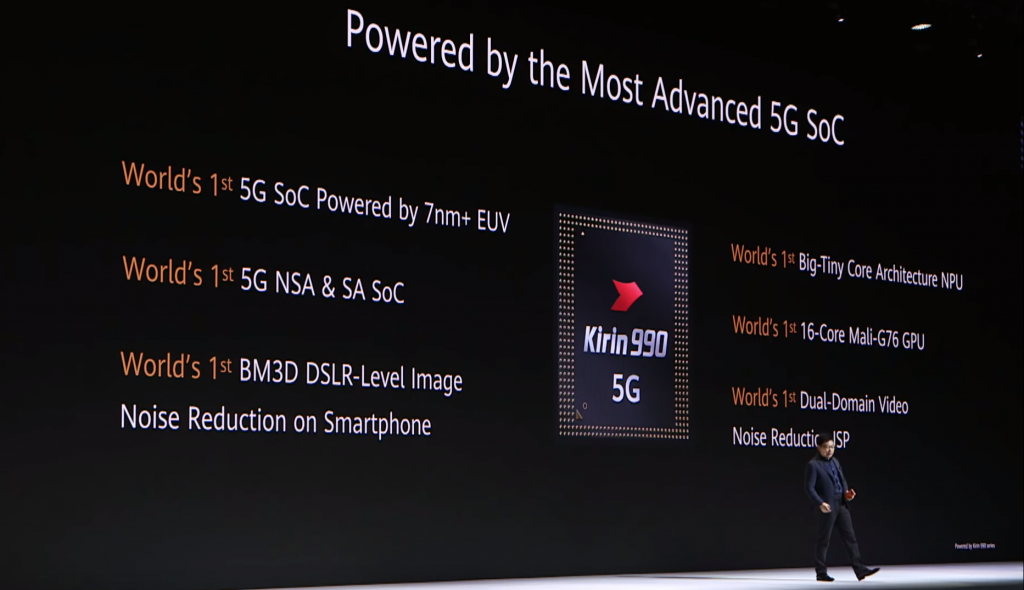
Huawei presented three different smartphones, being the Mate 30, Mate 30 Pro and Mate 30 RS. The Mate 30 Pro and 30 RS share most of the specifications, although the later one is only available with 12GB of RAM, 512GB of internal memory and the Kirin 990 5G. There is little to say, as we’ve covered most of the details in dedicated articles, with the only thing really standing out being the new camera found on the Mate 30 Pro. While the Mate 30 packs an interesting camera, this one is too similar to what can be seen on the P30, leaving little to nothing to say.
On the Mate 30 Pro, the company introduces a SuperSensing Camera Array, composed of 4 different cameras, with the usual ultra-wide, regular and telephoto lenses, although this time, one of the cameras is dedicated to video recording, finally improving Huawei’s track record in this department. It is worth mentioning how this new camera configuration sees the loss of the periscope lens introduced on the P30 Pro, meaning this device only has an optical zoom of x3, instead of x5, and can go up to x30 in digital, instead of the x50 we’ve gotten used to.
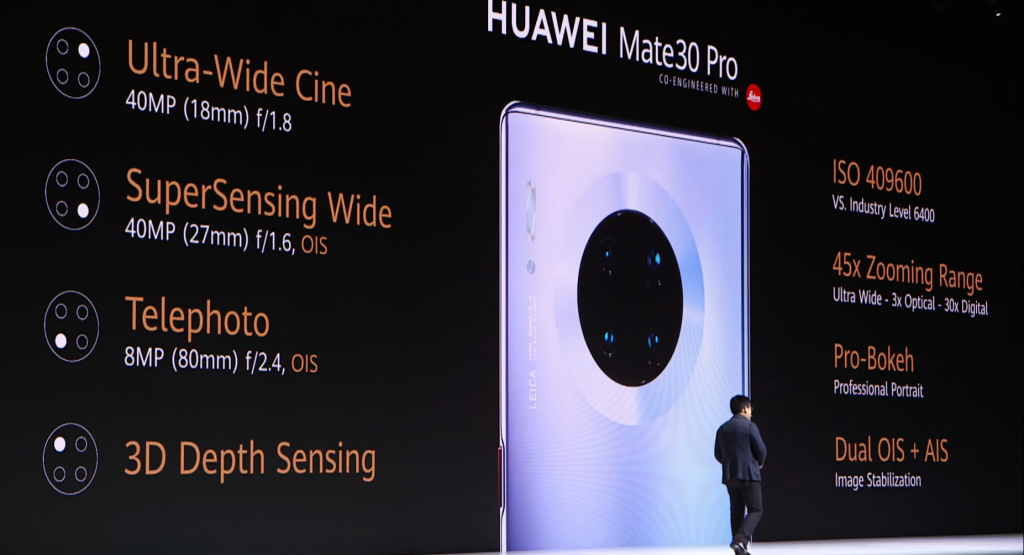
At some point during the presentation, Huawei took the time to remind us of their photography contest, the Huawei Next-Image Awards, which run from the 26th March to the 31st July of this year. In total, the company has received over half a million entries from a total of over 150 different countries. The main condition to participate in this contest is to shoot the image on a Huawei device, with this contest being essentially a vitrine of the company’s camera capabilities. The contest is already in its third edition, with the first edition having been launched in 2017. As per usual, the pictures taken by both regular users and professionals showcase the beauty of our world, but also everyday moments of our common lives. The company will be holding an exhibition of some of these entries in November of this year, between the 7th and the 10th, in Paris, at Paris Photo.
The launch of the Mate 30 series also corresponds with the introduction of the new version of EMUI, EMUI10. While this one was first announced and showcased at the Huawei Developer Conference in China last month, we had an opportunity to see once again the various novelties, such as an always-on display mode that changes of colour depending on the time of the day. The colours have also been changed, with Huawei introducing a Morandi colour scheme. In terms of layout, Huawei introduces a magazine layout, being more minimalistic overall. In terms of animations, the company has reviewed them. We also see the introduction of a new general dark mode, which should affect most of the applications. The always-on display mode also introduces various new styles and different animations, allowing users to customize it to their liking:

On supported models of smartphones and Huawei MateBooks, we find a new multi-screen collaboration mode, which seems to expand on the OneHop features launched earlier this year. With this, the screen of the smartphone is integrated to the laptop, allowing users to view messages, share files or use the smartphone as a separate machine but via the laptop:
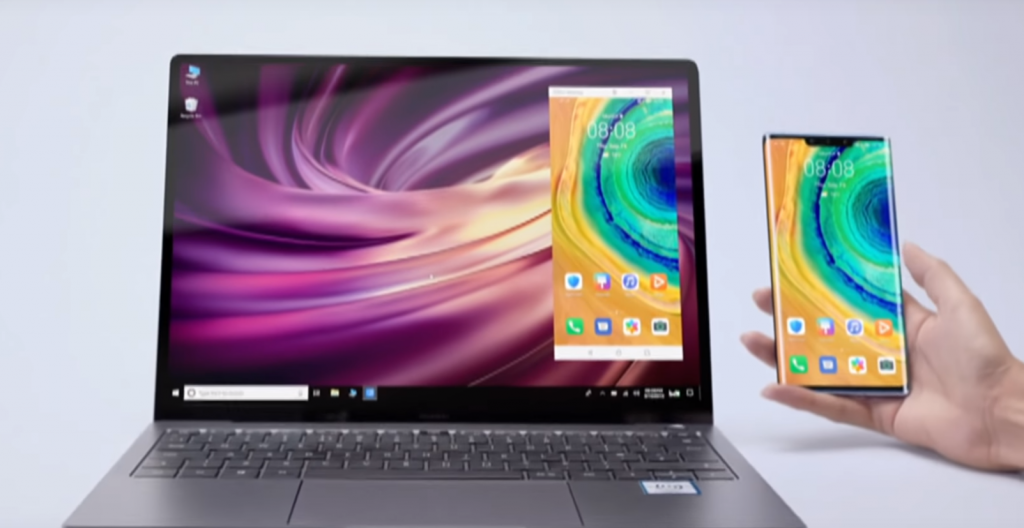
The company also showcased a new software feature, Huawei HiCar, which seems to expand on their existing Digital Car Key, launched with EMUI9.1, together with the launch of the P30 series earlier this year. This time, Huawei HiCar can be used to unlock the vehicle, but also be connected to its on-board computer, allowing users to access various features of their devices, as well as control various features from the car in question. Some of the examples used in the promotional video is controlling the AC system or opening/closing the car windows.
In terms of privacy, the IMEI is now anonymized, instead of letting applications track users across multiple applications, which is overall a good thing, allowing us to escape a bit the constant tracking from advertisement firms. We also have phone-to-cloud end-to-end encryption, meaning users storing their pictures and documents on the Huawei Mobile Cloud are the only ones that can access said data. Taking in account the current situation Huawei is in, with constant accusations of spying on behalf of the Chinese government, this should reassure some potential or existing customers.
Again another feature oriented towards more privacy, Huawei introduces Huawei AI Private View, which uses the front camera to determine whether you are alone or there’s somebody else looking at the phone screen, and allowing users to hide (or not) messages from various applications. The example used is a bank operation, which is undeniably an interesting feature.
Huawei also showcased, once again, their new generation of FreeBuds, the FreeBuds 3, announced at IFA2019. These new wireless earphones use Huawei’s own Bluetooth chipset, the Kirin A1, and offer, at least according to the manufacturer, active noise cancellation. The FreeBuds 3 can also be wirelessly charged, being more convenient overall, compared to having to plug them to charge. Pricing-wise, the company is charging 179€ for these, an increase compared to the first-generation of FreeBuds, seen in early 2018, which launched for 159€.

The presentation also included another overview of Huawei’s Mobile Services, as the new Mate 30 series doesn’t have Google services. For instance, Huawei’s ecosystem is used by over 570 million monthly users, with the bulk of these users going through AppGallery, Huawei’s own app store, which counts 390 million monthly users and sees 180 billion downloads per year (Huawei counts updates as downloads):
Overall, the Mate 30 series raised once again the bar in what consumers should expect a device to be able to do, introducing a new market-leading camera, faster wireless charging and taking bold risks to push consumers to try new features such as the gestures control for the sound. Furthermore, products such as the Huawei Vision TV or features such as the capability of hiding messages when somebody else than the user looks at the device raise some concerns about the possibility of always being watched/tracked by a device, and how this could be misused by both the company and external people.
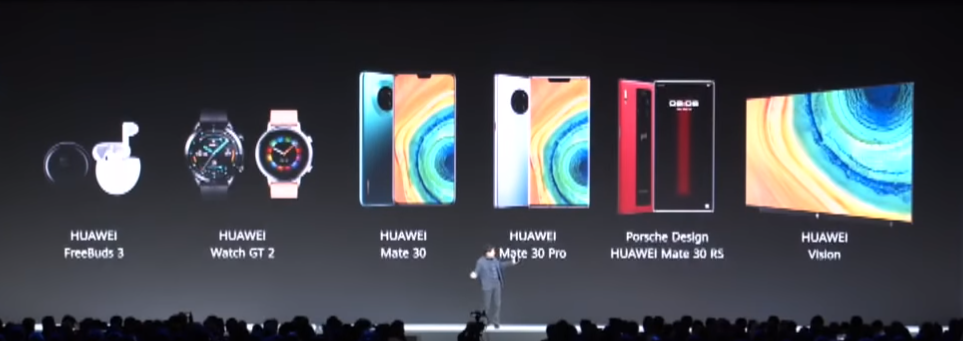
Finally, the weird reception of the Mate 30 series, with dozens of users mentioning how the device is useless without Google services, is rather curious, taking in account all the articles that come out regularly criticizing the American search giant for their poor privacy track record. Having a device without Google services is a unique opportunity to try and cut them out of our lives, replacing them with alternatives such as ProtonMail, other browsers (which, at the end of the day, allow to use Google search anyway, so there shouldn’t be much difference), different app stores, etc.
The Mate 30 series seems to be a big leap forward once again, with the company continually pushing innovation through their models, with the Mate 10 series, P20 series, P30 series and Mate 30 series having different cameras each time, as well as new designs and features. Meanwhile, this has left the Mate 20 series in a curious position, with last year’s Mate suddenly looking as the least interesting device made by the company in a while, sharing the same camera as the P20 series and not introducing many novelties, if we ignore the faster wired charging and the new [back then] Kirin 980.
To finish this article, we would like to talk about one of the biggest criticisms the public has against Richard Yu, which is his English accent: maybe it’s time to make an effort and listen to more diverse accents, as not everybody in this world will speak perfect English without accent. For instance, we have had the luck to work with Brits, Scots, French, Germans, Spaniards or Scandinavians, all having an extremely strong accent, making it hard to understand what they say, although, with time, one gets used to it. The same can be said about Richard Yu: while his accent is difficult, it is quite easy to understand. Replacing him, at this point, would make these conferences have less meaning, as Mr. Yu has been holding them for years, being present at the launch of most high-end smartphones of the company, laptops, chipsets, routers and other products related to the Huawei Consumer Business Group. On top of all this, the CEO was supposed to take his retirement this summer, but, due to the situation between the US, China and Huawei, he decided to stay longer at the company. It is also worth noting that without him, most likely, Huawei might not be what it is today, having, under his leadership, turned from a white-label smartphone manufacturer to an innovation powerhouse, pushing the industry forward launch after launch, and managing to make of Huawei the world’s second largest smartphone manufacturer, as well as have a strong presence in the wearables, tablets, laptops and other segments of the consumer market.
More on this subject:
- Huawei launches various accessories to go with the Mate 30 series (20/09/2019)
- Huawei launches new version of the Huawei Watch GT, the Huawei Watch GT 2 (20/09/2019)
- Huawei launches the Huawei Mate 30 RS Porsche Design (20/09/2019)
- Huawei launches the Huawei Mate 30 Pro (20/09/2019)
- Huawei launches the Huawei Mate 30 (20/09/2019)
- Huawei’s lead-up to the Mate 30 series reveal (20/09/2019)

